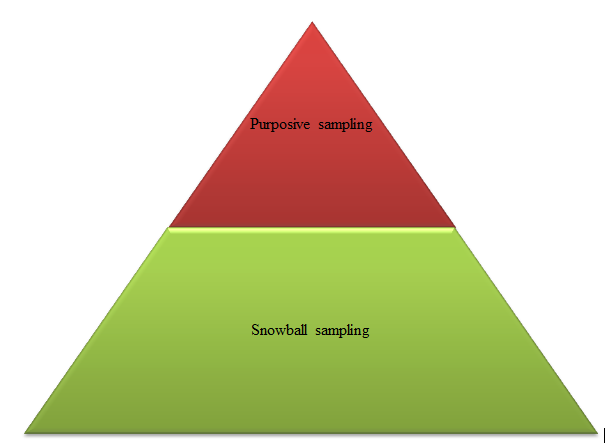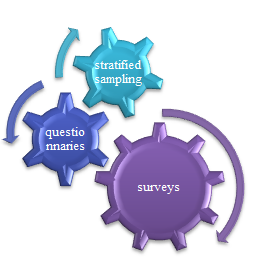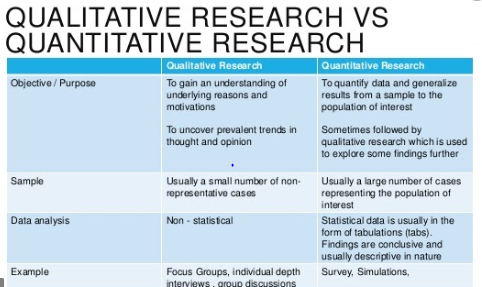Research Methodology Assignment: Qualitative & Quantitative Methods
Question
Task: Prepare a research methodology assignment considering the situation of how corona virus (covid-19) affecting restaurant business in Sydney. Review range of qualitative and quantitative research methods for finding better results.
Answer
Executive Summary
The report on research methodology assignment gives detailed methods of gathering data about the situation of the restaurant business and the impact due to coronavirus. The report on research methodology assignment takes into consideration both qualitative and quantitative methods for finding better results. Different techniques were used in the present context of research methodology assignment for gathering information from the participants, the participants included restaurant owners, waiters, managers, and other people involved in the functioning of restaurants. Sampling methods were used in both the research types. Surveys, questionnaires and in-depth interviews were used for asking questions regarding the impact and the emotional turmoil that they are going through.
Introduction
The research methodology is crucial for finding the exact methods and techniques used for conducting the report. The methodology herein research methodology assignment focuses on qualitative and quantitative methods for finding out the effects of COVID 19 on restaurant business in Sydney. The research methodology is also helpful for suitably achieving the research objectives. There are several methods and procedures for identifying the problems and thereby analyzing the information concerned with the topic. It assists in establishing core values and ethics required in completing the report. The report on research methodology assignment here uses several methods, Designs and methods of data collection for analyzing accurate data.
Findings
Qualitative research method
Study population: Qualitative research seeks answers to the research questions and makes sure of a set of methods for answering the questions. The method collects proof and presents the findings. With the help of qualitative research complex textual descriptions of the experiences of restaurant owners living in Sydney in the current pandemic are evaluated (Almalki, 2016). The research method is useful in knowing their emotional turmoil by asking questions and evaluating the responses. Qualitative method when is used alongside quantitative method helps in interpreting data and understand the complex conditions of a situation better.
Data collection
Qualitative research in the research methodology assignment was conducted by focus groups and in-depth interviews. These two methods are useful for understanding the restaurant business in Sydney and the current condition due to coronavirus. Due to the rise of the virus, it was not possible to conduct the interview in person. Therefore the data were collected in the form of audio and video types. As the questions asked to them were open-ended the answers to most of the questions were not limited to “yes” or “no” (Antwi, & Hamza, 2015). In-depth answers regarding the closing of the restaurant, their financial conditions, any step was taken by the government for the restaurants were discussed in detail. This method is flexible and therefore allows communication between the participants and the researcher. The relationship between the participant and the researcher is also less formal (Baranyai et al. 2015). Each of the questions made was responded in more detail with elaborate explanations. Researchers in this method are also presented with an opportunity to immediately respond to the answers of the participants by asking questions. The range of questions about the emotional style of the restaurant owners or servers was received. The researcher here had the flexibility in probing initial responses of participants and asks why and how. In engaging participants, researchers need to listen carefully and minutely to keep the focus according to their styles.

Fig 1: Data collection methods
(Source: self-created)
Sampling method
Sampling is the most effective method in collecting data in quantitative research. Data from participants in the restaurant business in Sydney were gathered by sampling technique. A sample of the population involved in the restaurant business was used for this study (Guetterman, Fetters, & Creswell, 2015). The research objectives of the study and the diversity of the population involved in the study determine the members. The sampling method for collecting information from the restaurant servers and owners were “purposive sampling” and “snowball sampling” (course.ccs.neu.edu, 2020).
Purposive sampling is considered as one of the most common methods for gathering information. Participants in this method are selected on pre-selected criteria that are relevant to the research question (Hammarberg, Kirkman, & de Lacey 2016). For these study restaurant managers, owners and servers were selected for answering the questions. Sample access for the questions was fixed before collecting data and was dependent in the time available. Snowball sampling is also done in this study. The participants who are already contacted gave access to their social media accounts to contact other members of the same community. Therefore the “hidden members” were contacted using this method (Mayer, 2015). With the help of this method, the restaurant owners located in other parts of Sydney were contacted and thus helped give a broad response and idea of the situation in the restaurant business.

Fig 2: Sampling method in Qualitative research
(Source: self-created)
Quantitative research method
Study population: The population for the study developed in the research methodology assignment is the restaurant owners and people involved in the restaurant business in Sydney. The information for the research was taken by conducting surveys and sending out questionnaires to the participants (McCusker, & Gunaydin, 2015). The questions were close-ended and a previously made template was provided for answering the questions.
Data collection
Data was collected by the help of organizing surveys, questionnaires were prepared and sent out to the participants for answering these and expressing their views in the current business environment due to the pandemic. Close-ended questions were used in the study. Emails were sent out to the participants with an attached questionnaire (Meng, Dave, & Chauhan, 2015). As the questions were close-ended, it did not, however, justified the full opinion of the participants like it did in qualitative research. Data were collected with the help of sampling techniques which was integrated into the surveys. Probability sampling was used in the research. “Stratified random sampling” was used. The participants were divided into groups based in the occupation in the restaurant and questions were asked. The members from the sample were chosen randomly without any prior knowledge of their occupation (Noble, & Smith, 2015). Close-ended questions were asked based on the previously prepared template. This had questions like the wages that they receive, any additional service that was given to them during such times of distress and so on (libguides.usc.edu, 2020).

Fig 3: Data collection methods
(Source: self-created)
Data analysis
After the data of the responses were collected while preparing this research methodology assignment, these were later analyzed for finding out the graveness of the situation. It was found out the most of members were not satisfied with the measures taken by the government (Palinkas et al. 2015). Most of the restaurants did not take any additional service for helping the servers of guards during such thought times. Home delivery was only available for some restaurants in some selected regions. The safety gears and additional safety measures of the delivery partners were not always provided by the restaurant owners. [Referred to Appendix 1]
Ethical considerations
Whenever research on research methodology assignment is conducted involving people the well-being of the participants must be a top priority. The research questions are not of primary importance. A choice must be prepared between harming the research or the participant; the research must always be chosen (Rahman, 2017). While conducting research on research methodology assignment, it is of utmost importance that the participants are aware of the rules and that no personal information will be made public without prior consent.
- Respect for the participants must be maintained. The commitment must be made for respecting the autonomous nature of the participants; the anonymity must not be diminished. The dignity of the participants must be respected.
- Beneficence must also be maintained. It must be seen that the risks to the research are minimized including any social or psychological risks. The benefits of participating must be maximized (Thanh, & Thanh, 2015).
- Justice must be done to the participants. A fair distribution of the benefits and risks that are resultant from the research must be maintained. The ones who are benefited from the research must only be the ones who are actively participating in the research.
- Respect for communities must also be maintained. The researcher has an obligation to protect the interest and values of the participants and protect every member of the community from any kinds of harm (Watson, 2015).
- Informed consent must be received from each participant before starting the research. The researcher must see that the participants want to deliberately participate in the research. The people must be informed about every minute detail associated with the research for obtaining informed consent.
Conclusion
The types of methods used in the study are effective in finding out the feelings and conditions of restaurant owners and managers in Sydney. The qualitative and quantitative methods explored in the above sections of research methodology assignment provide a range of questions are useful for knowing the plight of the restaurant business in the country. The research was conducted keeping in mind the sample size and the relevant questions. Research ethics were also considered while conducting the study. The research on research methodology assignment was conducted considering the responsibilities of the business industry and the anonymity of the participants were maintained.
Recommendations
It is recommended herein research methodology assignment that for receiving better results of the research more time is invested in collecting data. Better tools and techniques must also be used for getting relevant methods. Non-probability sampling could have been used in certain places for maintaining relevance with the participants. The bigger sample size must be taken so that the context of the research on research methodology assignment increases and the responses of many participants can be tallied. The demographical location could also have been widened for understanding the situation of the restaurant business in other cities, towns and areas of Australia.
Reference list
Journals
Almalki, S. (2016). Integrating Quantitative and Qualitative Data in Mixed Methods Research--Challenges and Benefits. Journal of education and learning, 5(3), 288-296. https://files.eric.ed.gov/fulltext/EJ1110464.pdf, retrieved on: 5.5.2020
Antwi, S. K., & Hamza, K. (2015). Qualitative and quantitative research paradigms in business research: A philosophical reflection. Research methodology assignment European journal of business and management, 7(3), 217-225. https://www.researchgate.net/profile/Hamza_Kasim2/publication/295087782_Qualitative_and_Quantitative_Research_Paradigms_in_Business_Research_A_Philosophical_Reflection/links/56c7587108ae5488f0d2cd62.pdf, retrieved on: 5.5.2020
Baranyai, T., Herczeg, K., Onódi, Z., Voszka, I., Módos, K., Marton, N., ... & Pálinkás, Z. (2015). Isolation of exosomes from blood plasma: qualitative and quantitative comparison of ultracentrifugation and size exclusion chromatography methods. PloS one, 10(12). https://journals.plos.org/plosone/article/file?type=printable&id=10.1371/journal.pone.0145686, retrieved on: 5.5.2020
Guetterman, T. C., Fetters, M. D., & Creswell, J. W. (2015). Integrating quantitative and qualitative results in health science mixed methods research through joint displays. The Annals of Family Medicine, 13(6), 554-561. http://www.annfammed.org/content/13/6/554.full.pdf, retrieved on: 5.5.2020
Hammarberg, K., Kirkman, M., & de Lacey, S. (2016). Qualitative research methods: when to use them and how to judge them. Human reproduction, 31(3), 498-501. https://academic.oup.com/humrep/article-pdf/31/3/498/7066330/dev334.pdf, retrieved on: 5.5.2020
Mayer, I. (2015). Qualitative research with a focus on qualitative data analysis. Research methodology assignment International Journal of Sales, Retailing & Marketing, 4(9), 53-67. http://www.ijsrm.com/ijsrm/Current_&_Past_Issues_files/IJSRM4-9.pdf#page=57, retrieved on: 5.5.2020
McCusker, K., & Gunaydin, S. (2015). Research using qualitative, quantitative or mixed methods and choice based on the research. Perfusion, 30(7), 537-542. http://citeseerx.ist.psu.edu/viewdoc/download?doi=10.1.1.968.2338&rep=rep1&type=pdf, retrieved on: 5.5.2020
Meng, F., Dave, V., & Chauhan, H. (2015). Qualitative and quantitative methods to determine miscibility in amorphous drug–polymer systems. European Journal of Pharmaceutical Sciences, 77, 106-111. https://www.researchgate.net/profile/Vivek_Dave5/publication/271643252_Drug-Excipient_Compatibility_Studies_in_Formulation_Development_Current_trends_and_techniques/links/5707b35a08ae2eb9421bd50e.pdf, retrieved on: 5.5.2020
Noble, H., & Smith, J. (2015). Issues of validity and reliability in qualitative research. Evidence-based nursing, 18(2), 34-35. https://ebn.bmj.com/content/ebnurs/18/2/34.full.pdf, retrieved on: 5.5.2020
Palinkas, L. A., Horwitz, S. M., Green, C. A., Wisdom, J. P., Duan, N., & Hoagwood, K. (2015). Purposeful sampling for qualitative data collection and analysis in mixed method implementation research. Administration and policy in mental health and mental health services research, 42(5), 533-544. https://www.ncbi.nlm.nih.gov/pmc/articles/PMc4012002/, retrieved on: 5.5.2020
Rahman, M. S. (2017). The Advantages and Disadvantages of Using Qualitative and Quantitative Approaches and Methods in Language" Testing and Assessment" Research: A Literature Review. Journal of Education and Learning, 6(1), 102-112. https://files.eric.ed.gov/fulltext/EJ1120221.pdf, retrieved on: 5.5.2020
Thanh, N. C., & Thanh, T. T. (2015). The interconnection between interpretivist paradigm and qualitative methods in education. Research methodology assignment American Journal of Educational Science, 1(2), 24-27. http://files.aiscience.org/journal/article/pdf/70380008.pdf, retrieved on: 5.5.2020
Watson, R. (2015). Quantitative research. Nursing Standard, 29(31). https://hull-repository.worktribe.com/preview/374667/Nursing%20Standfard%20Quantitative%20research.pdf, retrieved on: 5.5.2020
Websites
course.ccs.neu.edu, (2020), Qualitative Research Methods, retrieved from: https://course.ccs.neu.edu/is4800sp12/resources/qualmethods.pdf, retrieved on: 5.5.2020
libguides.usc.edu, (2020), Quantitative methods, retrieved from: https://libguides.usc.edu/writingguide/quantitative, retrieved on: 5.5.2020
Appendices
Appendix 1:qualitative and quantitative research methods

(Source: https://lh5.googleusercontent.com/n9DdldNiVEE3tLOn6xc5ENMBR7mSc6bHoLdbwip4d8dGXZfjX0No2Z-VpZ7PSobQVwPrqa-6iBaAbEBLJsZsvh_En7l7ciureCrGAepW5O-GoqISCATc0IlxYZPDmYx3-B-hliBa)












